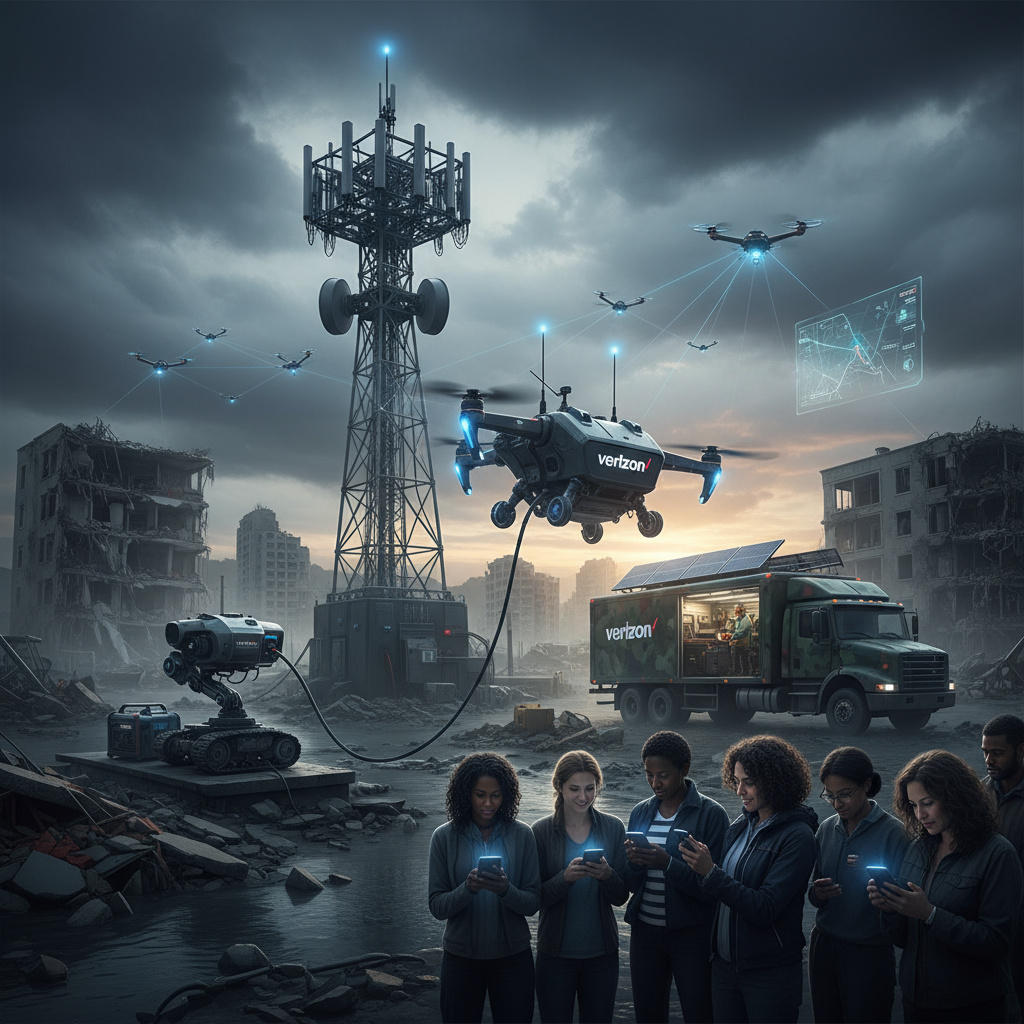Stay Connected When Disaster Strikes: How Verizon’s Tech Arsenal Keeps Your Phone Alive

Imagine this: a devastating hurricane rips through your town, power lines are down, and cell towers are toppled. The world around you feels disconnected, yet your phone still rings. How is this possible? In the face of natural disasters, staying connected isn’t just a convenience; it’s a lifeline. It’s how you communicate with loved ones, access critical information, and coordinate emergency services. This isn’t a hypothetical scenario for Verizon. They’re actively deploying a remarkable array of cutting-edge technologies – AI, drones, and robots – to ensure your phone remains connected precisely when you need it most. I recently witnessed firsthand how Verizon Frontline harnesses these innovations to respond to crises, and the solutions they’re building could literally be the difference between safety and uncertainty for you and your community.
The Frontline of Communication: A Glimpse into Disaster Response

When floods surge, wildfires rage, or tremors shake the ground, traditional infrastructure often crumbles. This is where Verizon Frontline steps in, a dedicated team focused on maintaining critical communications for first responders and communities. Their approach is proactive, leveraging advanced tech to anticipate needs and responsive, deploying quickly when disaster strikes. Their commitment extends beyond simply restoring service; it’s about creating resilient networks that can withstand the worst and recover faster.
The scale of these operations is immense. Imagine setting up a mini cellular network in a matter of hours, often in challenging and dangerous environments. This isn’t done with traditional cell tower construction. Verizon Frontline utilizes an ingenious blend of mobile solutions, each tailored to specific disaster scenarios. These are the unsung heroes of connectivity, working tirelessly behind the scenes to keep us in touch during our darkest hours.
Flying High with Connectivity: Drones and Tethered Aerostats
One of the most visually striking and effective tools in Verizon’s crisis response arsenal is the drone. These aren’t just hobbyist gadgets; they are sophisticated, industrial-grade machines capable of deploying vital network coverage. Imagine a disaster zone where ground access is impossible or unsafe. Drones can quickly survey the damage, assess network needs, and even deliver temporary connectivity themselves.
Beyond reconnaissance, Verizon utilizes “Cell on Wings” (COW) drones. These aren’t your typical quadcopters; they’re designed to carry and operate miniature cell sites, providing localized network coverage from the air. For instance, after a major earthquake, a COW drone could be dispatched to provide critical 5G connectivity to a specific evacuation center or a first responder command post, allowing vital communications to flow freely. This aerial advantage significantly shortens restoration times and extends coverage to otherwise isolated areas.
Even more impressive are tethered aerostats – essentially, blimps with powerful cell sites attached. These can remain airborne for extended periods, providing vast blankets of 4G and 5G coverage over a distressed area. Picture a large-scale event, like a major hurricane, where entire regions are without power. A tethered aerostat, deployed quickly, can act as a temporary macro site, bringing essential connectivity back to thousands of people. These aren’t just for emergencies either; they often augment network capacity during planned large events, showcasing their versatility.
Bots on the Ground: Robotics and Advanced AI for Network Restoration
While drones handle the aerial perspective, robots are stepping up to tackle the challenges on the ground. Think about a downed cell tower in a flooded area or a damaged infrastructure site that’s too dangerous for human entry. This is where robotic solutions can shine. Verizon is exploring and deploying robots for various tasks, from inspection and repair to providing localized hotspots.
Imagine a small, rugged robot equipped with cameras and sensors, navigating debris-strewn streets to assess damage to fiber optic cables or power infrastructure. This information, relayed back to human operators, can accelerate repair efforts and ensure worker safety. Furthermore, specialized robots can carry portable network equipment into hard-to-reach areas, acting as mobile hotspots for small groups of responders or residents.
But the true “brain” behind these operations is Artificial Intelligence (AI). AI plays a crucial role in predicting where and when outages are most likely to occur, allowing Verizon to pre-position resources. It analyzes vast amounts of data – weather patterns, historical outage data, network traffic – to create highly accurate predictive models. During a crisis, AI algorithms can rapidly re-route network traffic, optimize existing cellular resources, and even help pinpoint the exact location of damaged infrastructure, dramatically reducing response times.
For example, if a storm is forecasted to hit a specific coastline, AI can flag vulnerable cell sites, prompt pre-emptive asset deployment, and even simulate potential damage scenarios. Once the storm hits, AI systems can automatically detect network anomalies, prioritize repairs based on impact, and guide field teams to the most critical locations. This intelligent automation is what transforms reactive disaster response into a more proactive and efficient process, ultimately benefiting everyone affected.
The Future of Connected Resilience
The innovations being deployed by Verizon Frontline are more than just technological marvels; they represent a fundamental shift in how we approach disaster preparedness and response. By seamlessly integrating AI, drones, and robots, Verizon is building a network that is not only robust but also remarkably adaptive and resilient. This interconnected ecosystem of advanced technologies ensures that even when the unexpected happens, the essential threads of communication remain intact.
The ability to connect during a crisis can mean the difference between life and death, comfort and fear. It’s how families reunite, how aid is distributed, and how communities begin to rebuild. As natural disasters become more frequent and intense, the demand for such resilient communication infrastructure will only grow. Verizon’s proactive investment in these emerging technologies demonstrates a powerful commitment to keeping us all connected, especially when it matters most. It’s a testament to human ingenuity applied to critical real-world problems, promising a future where connectivity is not just a luxury, but a fundamental right, even in the toughest of times.

